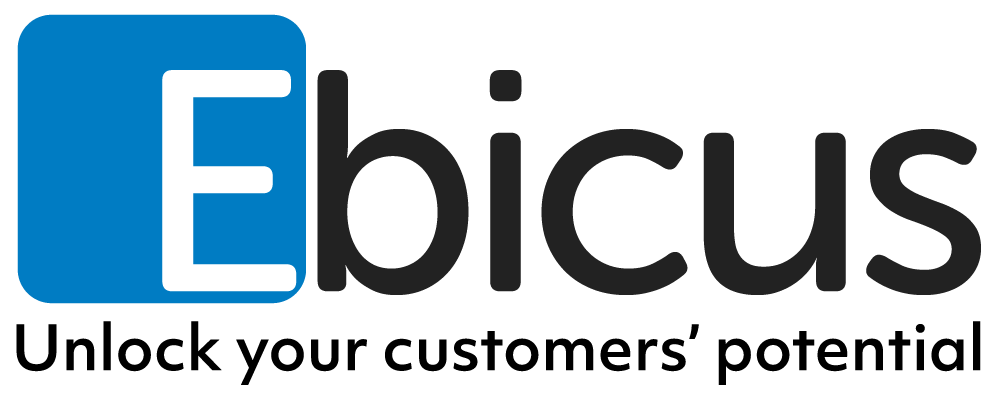Embrace Customer ExperienceBuilding a solid basis
Nowadays, companies are assessed on positive and negative customer experiences (CX). Regardless of the industry, businesses are compared with those delivering the best experience. Once a company has an online platform, customers expect an experience equal to other responsive sites.
Gartner emphasizes the importance of CX and explains the benefits of investing in CX. Most convincingly might be the fact that the process of customer bonding is far less expensive than obtaining new customers. Increasing retention rate by just 5% can impact profitability up to 95%. Moreover, satisfied customers will advocate products or services to friends and family. Believing the evangel of CX, the next phase aims at the visualization of experiences. Therefore the next sections describe how to connect the various sources, get the right insights, and set the right adjustments.
Connecting Silos
Too often, companies hire new employees which focus purely on CX. A frequent used entry point consist of a survey, questioning the experiences of the customer. Unfortunately, this survey might have a negative effect on some customers. These customers often expect the company to know the answers. For example, a customer is receiving questions about his experiences regarding a product or service. However, only one week earlier, the customer called services for hours, concerning the malfunction of the product. Obviously, this results in a negative experience. Acknowledging the problem, the next step is to understand the reasons and find a solution.
“There is no one size fits all.”
The problems arise as companies are divided in traditional divisions. As Marketing, Sales, and Services store their data in solitary databases or wield different jargons, it becomes hard to unite all customer data. The solution can be found in the storage of connected customer information within a so called ‘Customer Hub’. Regrettably, this isn’t that easy. For instance when a customer name slightly differs at the services division in comparison to the marketing system. Furthermore, Sales might have one ‘John Doe’ while Marketing knows ten people caring the same name. Hence, some guidance is advised.
Hitherto, data from the divisions are solely addressed. Besides this information, other data sources could be added to the Customer Hub. The Voice of the Customer is a popular term for an aggregation of data sources, consisting of data from social media and other places, where customers speak about the company. In addition, surveys and e-mails can be added to the Voice of the Customer.
CX Insights
Customer experience doesn’t stop at the Customer Hub. The goal is to report on CX and find correlations with business results, whereas in the end, a result is desirable. BI-tools can help to gain these insights. Reporting on Net Promoter Scores (NPS), Customer Effort Scores (CES), and Customer Advocacy (CA) can display the insights for customer experience. Furthermore, competitive benchmarking helps to validate these insights.
“The result should highlight the most important journeys and enucleate the moments of truth.”
The customer insight measurements do not cover any business result. New questions have to be asked in order to relate the CX to revenue. Therefore, reports should answer questions like: Does a high CX imply that customers buy more products (share of wallet) or buy more expensive products (premium price)? Do customers with a great experience refer the company more often to others? Besides the business result insight, these questions expose the impact of CX changes, provided that the right filter has been used.
Though, measuring CX is versatile, and customer journeys differ between companies. There is no one size fits all. Hence, finding customer journeys is indispensable in order for reports to make sense. Customer journeys can be elicited using top-down approaches like customer groups, workshops, and walkthroughs. The result should highlight the main journeys and enucleate the moments of truth. Moments of truth explain the critical touchpoints between the company and a customer. All these findings set the adjustments of the bottom-up created Customer Hub, wherefore the report will be filtered giving accurate insights.
Concluding, the presented solution covers both top-down and bottom-up techniques. The bottom-up part features a data-driven structure collecting existing structured data and unstructured data from several sources. Next is the process of combining these datasets in the Customer Hub, linking all information to a single customer. The top-down approach contributes to the identification of important customer journeys and the right measurements. Using this information, we are able to retrieve the right insights, which support operations, and show the effect of changes. Additionally, the insights help during the first steps of becoming a customer experience focused company, by showing what information you have on the customer, and what is missing. Hereby it assists the just (or to-be) hired customer experience employee in order to ask the right questions to the right customers.
[ps2id id=’commentaren’ target=”/]
Sales, Marketing, Service of IT manager…
Stay updated
Wij willen je graag op de hoogte houden van het nieuws rondom onze diensten die jou interesseren. Het enige wat je daar voor dient achter te laten zijn jouw mailadres en je voornaam. Vanaf dat moment zullen we je van tijd tot tijd een Ebicus update sturen.

